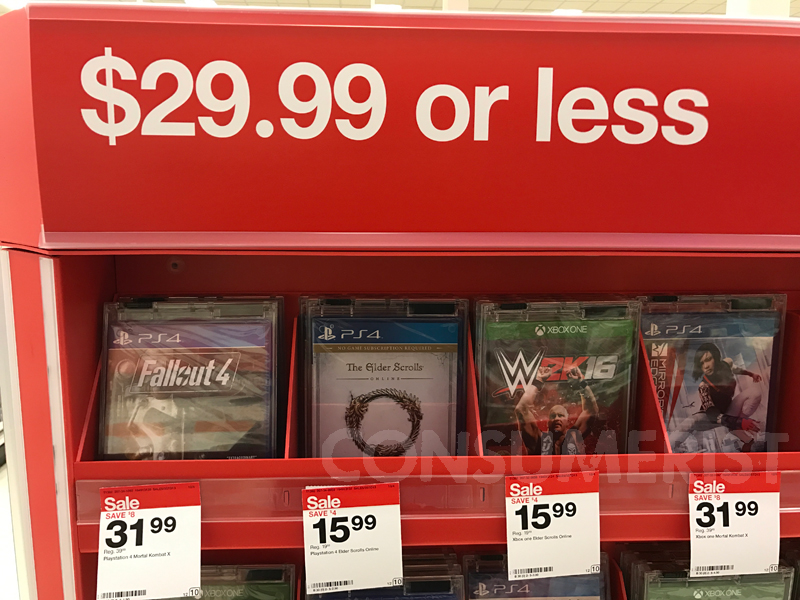We buy in bulk to make things cheaper, right? No, that’s not how things always work. Sometimes you’re better off buying multiples of a smaller package to get the best price per unit. For some reason, this problem is especially prevalent at Target, leading us to call it “Target Math.” [More]
target math

‘Target Math’ Continues To Spread, Infecting Lowe’s & Walmart
The discount chain Target is very good at many things, which include designer partnerships and building tiny stores. It’s very bad at some other things, which include selling groceries and putting prices on products that make any sense. “Target Math” is the name we give to these bizarre bulk markups, “sale” items that aren’t actually discounted, and pricing discrepancies within the same store — but this dubious art isn’t just practiced in the halls of Target. [More]

When Do Identical Products Have Two Different Prices At The Same Store? When They’re Sold At Target, Obviously
Target’s pricing and labeling incompetence is so legendary that we now use the term “Target Math” to describe a situation where any retailer baffles customers by, for example, advertising a “sale” that is more expensive than the everyday price, or where percentages are irrelevant, or when the economy of buying in bulk is turned on its ear. The latest fuzzy math from Target involves charging two different prices for identical items, including infant ibuprofen and acetaminophen. [More]

Here’s Some Fuzzy Pricing Math That Isn’t At Target
We began calling certain types of fuzzy pricing schemes “Target math” some years ago, since they turned up most often at Target stores. When this happens, unit pricing goes awry, and it costs more per unit to buy a larger quantity of the same thing. For example, when a two-pack of lotion costs almost a dollar more than two individual bottles. [More]

Fuzzy Math At Walmart Means Bigger Chicken Broth Carton Costs You More
On the shelf, the 48-ounce carton of Swanson’s chicken broth brags that it’s 50% bigger. “50% bigger than what?” the cynical consumer might ask. The fine print tells us that it’s in comparison to the company’s 32-ounce container. This is all factually true, but the problem is that while the package makes shoppers think that they’ll get more, they’re actually paying more per ounce to buy the bigger package. [More]

Walmart Charges Extra $0.08 To Put Your Printer Cartridges In A Single Box
Theoretically, buying combination packs or buying an item in bulk should save you money. You’re giving the retailer more money, right? Only the pricing logic of big-box stores doesn’t really see things that way, and that’s where Target Math comes from. Target Math is when you pay more per unit for buying in bulk, like this combo-pack of printer ink where you pay an extra eight cents for the privilege of having your cartridges in one box. [More]
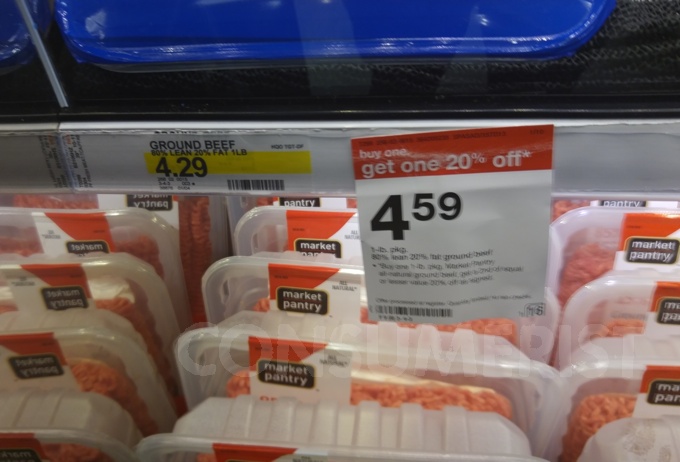
Meat’s On Sale At Target: Raise Prices By 30 Cents
Target CEO Brian Cornell came from the food business, having worked for companies like Safeway, Sam’s Club, and PepsiCo before joining the big-box discounter in 2014. Since then, he’s been working to make groceries at Target better, experimenting with delivery and more fresh and minimally processed food instead of cans and snacks. For example, there’s this nice selection of ground beef that Michael wanted to buy, which is even on sale this week. No… wait a minute, that’s not right. [More]
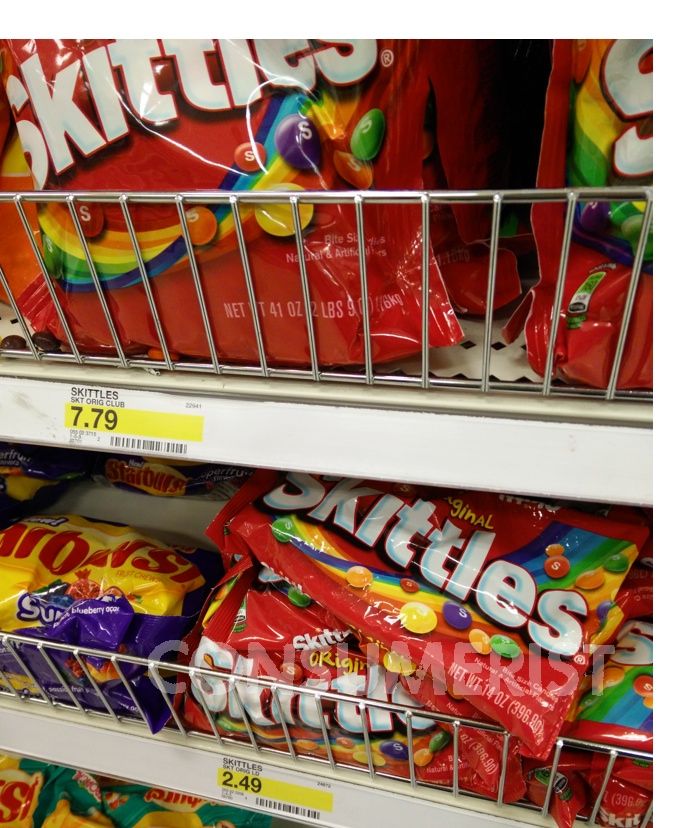
Target’s Fuzzy Math Spreads To Dollar General
Imagine that you need 42 ounces of Skittles. We’re not sure what you need them for; it’s your life. When shopping in large quantities, always check for dastardly Target Math, which exists to trip up innocent shoppers like you who just want a large quantity of something. Instead, Target Math makes you pay more per ounce when you buy in bulk, while you could have purchased multiples of a smaller size for less money. [More]

How Much Does This Bottle Of Stain Remover Cost?
Welcome to Target! The normal rules of logic do not apply here, and addition and subtraction also work differently, so you need to evaluate all price tags and signs that say “Sale” or even “Clearance” carefully. Are you up to the challenge? Then you can shop at Target. Congratulations. Here is your first assignment: help reader Bill figure out how much this bottle of Oxi Clean costs. [More]

Kohl’s Math Means Percentages Don’t Make Any Sense
In retail, Target Math is when one of two things happen: an item on sale isn’t actually marked down (sometimes it becomes more expensive) or an item becomes more expensive when you buy it in greater quantities. Maybe we need to start tracking a new variant called Kohl’s Math, where percentage-off signs don’t actually reflect the “sale” price that they’re supposed to. [More]
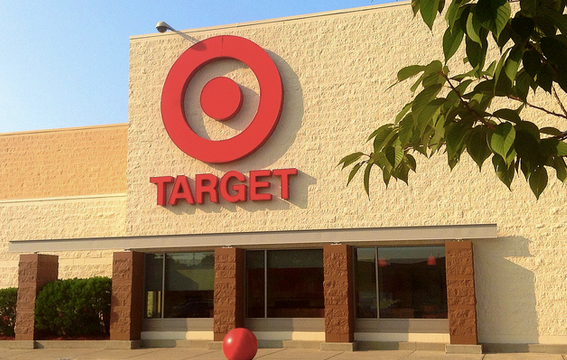
Not Even Diaper Pail Bags Are Spared From Target Math
Buying in bulk is usually the way to save money on an item that you know you’ll be buying a lot of… like, for example, special deodorizing bags for your diaper pail. Unless you’re shopping at Target. Then, the normal rules don’t apply, and you shouldn’t assume that buying one package of 20 items will be cheaper than two packages of 10 or even four packages of five. [More]
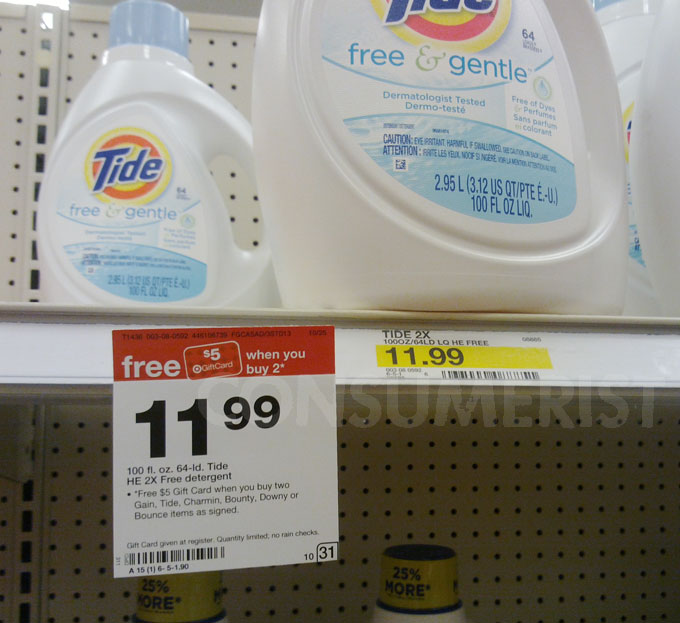
At Target, Tide Free Is Free Of Dyes, Perfumes, And Logic
Reader Rob is a longtime reader and very familiar with our “Target Math” series of posts, so he knows to check the actual price per ounce on items he plans to buy. Especially, he notes, at Target. This recent promotion for laundry detergent demonstrates why. [More]
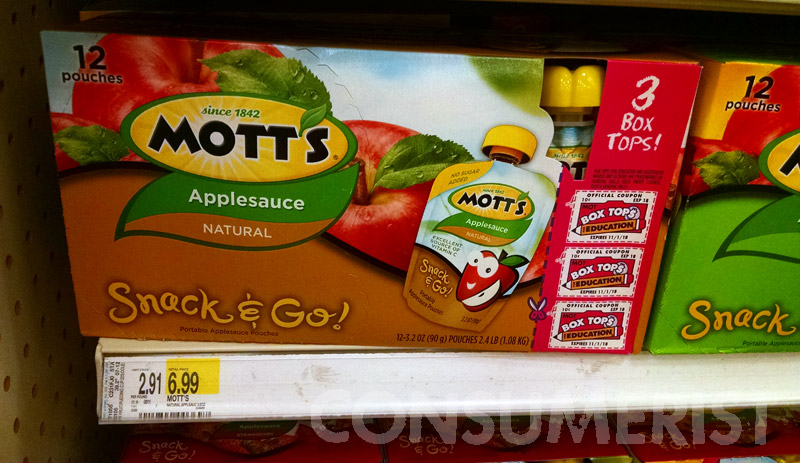
Target Charges $1 Extra If You Want Your Applesauce In A Bigger Box
Perhaps Target’s goal is to simplify our lives, reducing the number of boxes that we have to carry out of their stores. Probably not, though. There is no logic behind Target math, but at least now they’ll price match to a store with more logical pricing. [More]
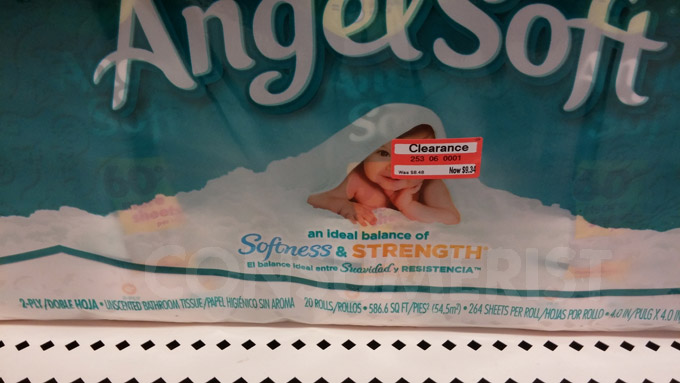
Toilet Paper Clearance At Target Means You Pay 86¢ More
Justin was shopping at his local Target store when he spotted a big pack of toilet paper marked “Clearance.” Hey, great! It’s always really useful when you can find a markdown, even one of 15% like an initial Target clearance markdown, on an important household staple. Then he looked closer. [More]
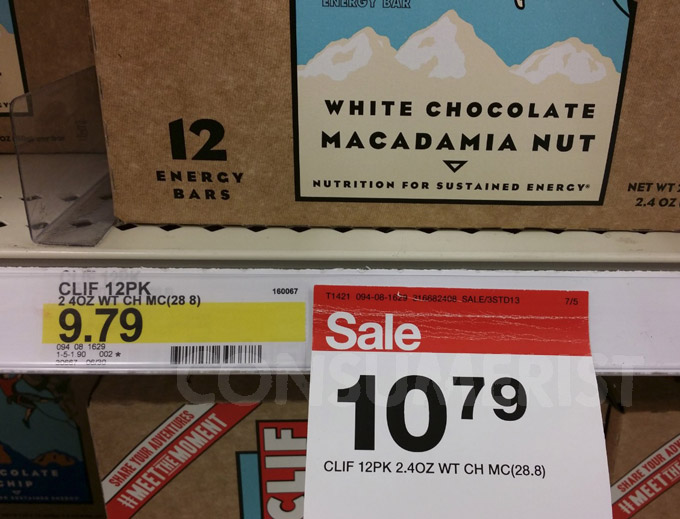
More Examples Of Target Math: They Never Said It Was “On Sale”
There are two different types of Target math, our name for the unusual ways that stores calculate bulk and sale prices. One type is when a “sale” price is higher than a product’s regular price, which is not the normal definition of the word “sale.” The other is when a bulk package of an item costs more per item than just buying it individually. Now we’ve discovered a new form: random numbers pulled in from nowhere. [More]
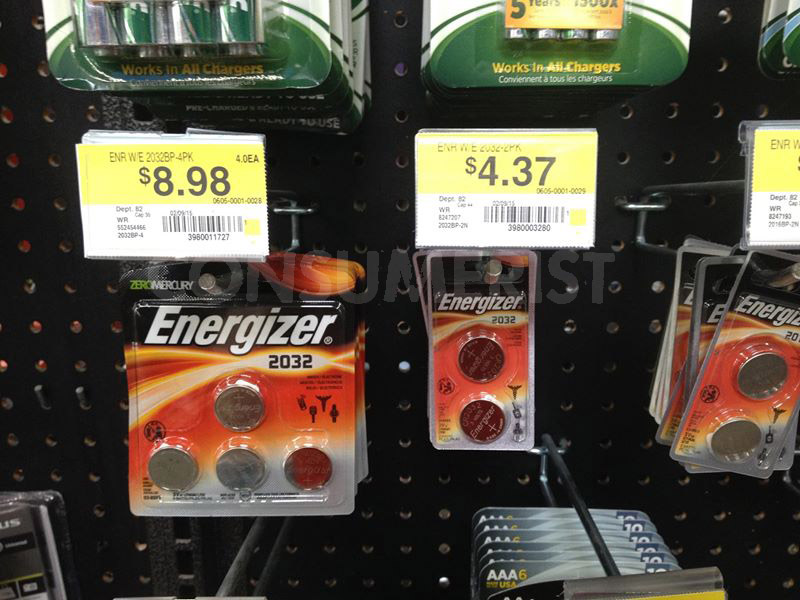
At Target And Walmart, Save More Money By Not Buying In Bulk
Target has its own special variety of math, where putting an item on sale means raising the price, and buying in bulk means that you pay more per unit. This strange method of calculating prices isn’t exclusive to Target, though: you can find it at other retailers, too. [More]
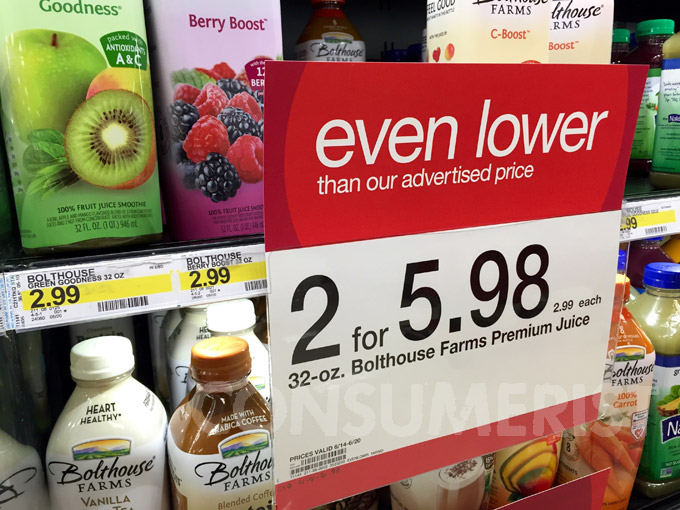
When Life Makes Too Much Sense, Just Apply Target Math
Here is how buying in bulk is supposed to work: you go to the store. You buy a multi-pack of an item, so the retailer makes more money from your shopping trip. In turn, the retailer charges you less for the multi-pack than you normally would have paid. That’s how this works…except when stores apply Target Math. [More]


